 Sámegillii
Sámegillii  På norsk
På norsk
Articles about Sami school history
Part 22 - printed in Ávvir 18.12.2010
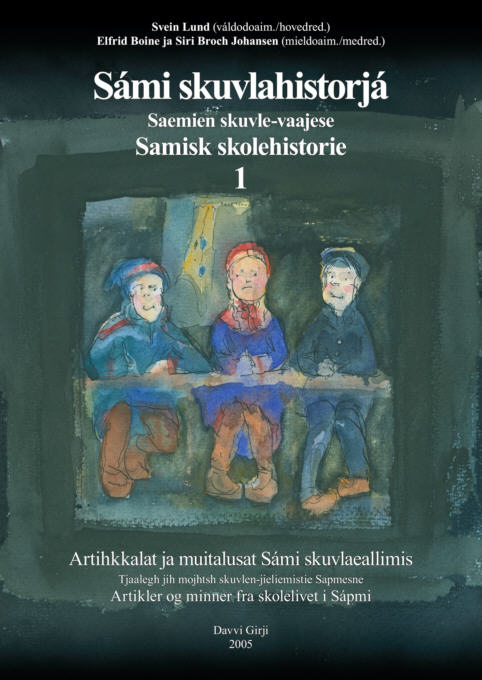 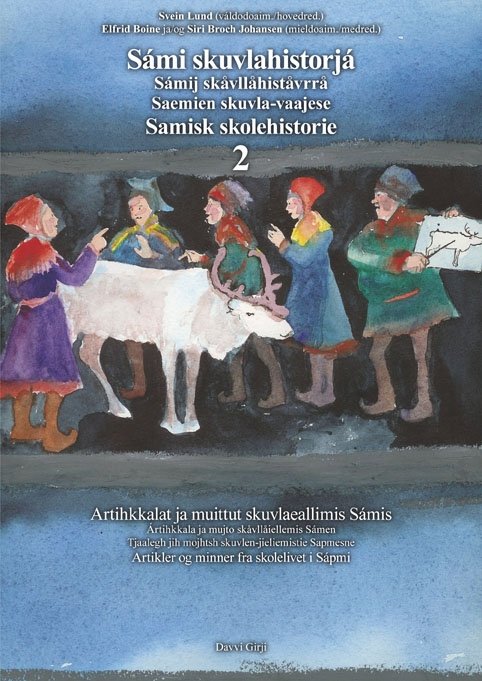 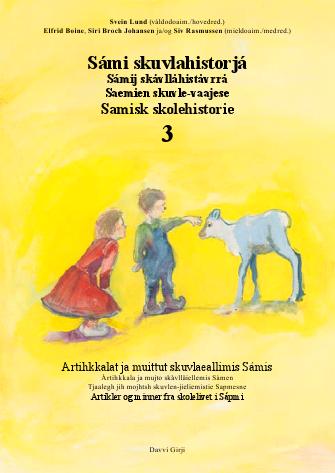 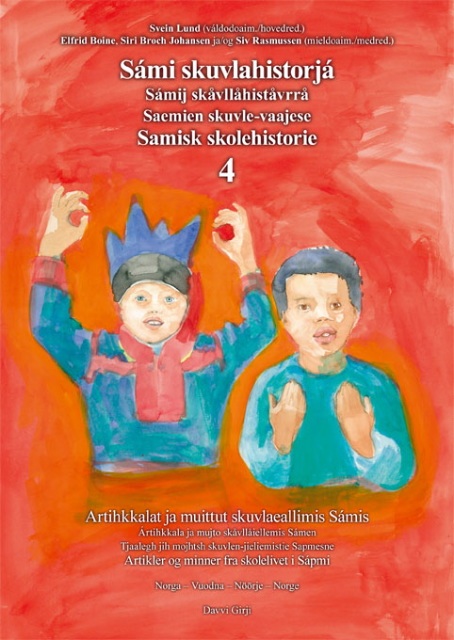 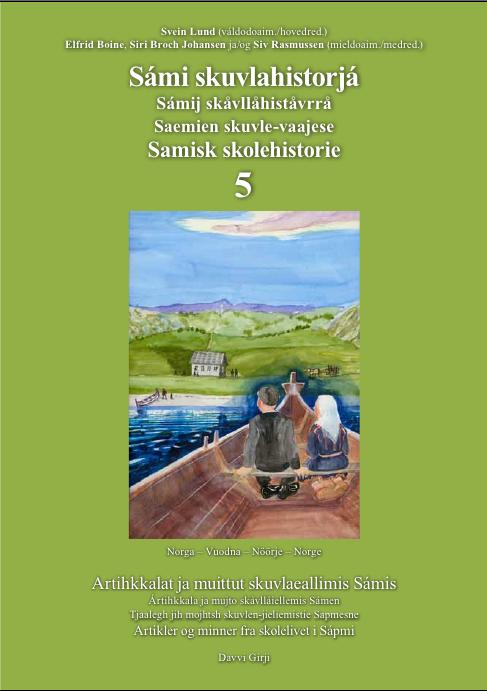
Do you know Sami school history?Sámi skuvlahistorjá / Samisk skolehistorie (Sami School History) is a series of books published by the publishing house Davvi Girji. In about 200 articles in 5 volumes there is told about the experiences of Sami children in Norwegian schools, and about the changes in the educational politics of the Norwegian authorities towards the Sami population. The books are published with parallell text in Sami and Norwegian language.In this web site some of the articles of the first book are also published in English. It would be too much to translate it all, so to make this history available to a greater public, we are translating a series of newspaper articles, which sorted by topics make a summary of stories in the books. So far there are 28 articles published in Sami language by the Sami newspapers Min Áigi and Ávvir. They are also published here in Norwegian and the English version will be published gradually as they are translated. These articles are edited by the main editor, Svein Lund. Besides him the editing board of the book series consist of Elfrid Boine, Siri Broch Johansen and Siv Rasmussen. |
For may years the only offer for those in need of special education was to be sent away to institutions. In that way the children often lost the contact to the environment at home to a great extent. There are many tragical stories about abuse and neglect in this kind of institutions. Sami speaking pupils could arrive in an institution having practically no knowledge of Norwegian, and a few years later return home not understanding Sami.
Among those who were sent away were children who had physical handicaps and illnesses making them unable to move like others or needing medical care in hospital. From 1913 on The Norwegian Lapp-Mission run a separate home for disabled in Tromsø. Children with tuberculosis were often sent to Kysthospitalet (the Costal Hospital) in Tromsø, where they for many years also got schooling.
The parents were not always consulted. In Sami School History 1 stories are told about parents which refused to send away mentally disabled children in Kautokeino and in part 3 about when each and all parents in Spansdalen in Lavangen refused the school to send pupils to a "school for mentally handicapped".
Following are a few glimpses from three of the seven stories on special education from Sami School History 4.
Only from Kautokeino and Karasjok at least four pupils have attended the school for the deaf in Trondheim. One of them was Kirsten N. Sara, later married Ørsnes, who was sent to the School for the deaf in 1940. Earlier she attended a regular school in Kautokeino, but it did not function very well:
My worst memories are the lessons when I was seated at my desk and did not understand anything at all. Everything flew over my head. The teachers neither had knowledge about deaf people nor sign language, so I was not given any teaching at all. Just a thing as understanding when the other pupils got up to sing. How could I know what singing was when I had never heard it?
I might have been the very first from Kautokeino to be sent to a school for deaf. .... Only then did I realize that I was deaf and that there were also more people who were deaf. ...
No one from my family came to Trondheim to see how I was doing in the School for deaf. My mother never came, not even for my confirmation. ...
It was talked little about Sami in the school for deaf. Still I did not experience being Sami as a problem. Neither that it was difficult to adapt to a Norwegian culture. It simply was not a theme. ...
Today I feel Sami, not Norwegian, although I do not know the language. I use Norwegian. My schooling distanced me from my own culture, but do remember that it was necessary. In Kautokeino there was neither knowledge nor an offer for deaf students. The alternative would have been no schooling at all. Then what? It hurts having lost my language and my culture, but I was given another language in which I can communicate. I have also found a cultural belonging in a deaf environment. When I meet my family I wish I knew Sami. But at that time Sami in the School for deaf was not an option. And far from everybody in my family could learn sign language. ...
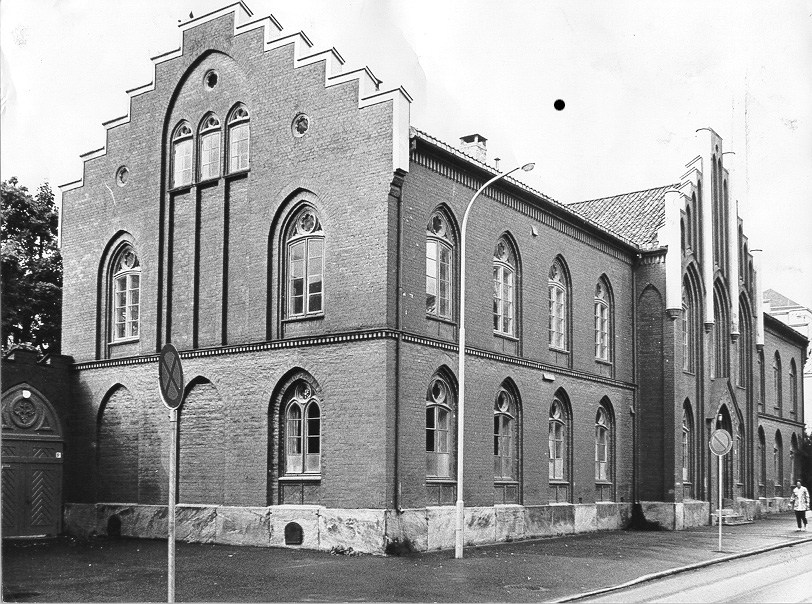 |
The school for the deaf in Trondheim was situated in this building 1855-1991. Now among among other things the Norsk døvemuseum (Norwegian Museum of the Deaf) is here. (Photo: Norsk døvemuseum) |
A deaf boy was born in Karasjok in 1989. A lot had happened in the meantime, both in regard of teaching of Sami and of dea people, but the combination Sami and deaf was still difficult to handle for the school authorities. Juhan Niillas Eira tells:
– I am born deaf and I live together with my parents, my older brother and my younger sister. Both of my parents have learned sign language. My siblings use lip-reading, signs, gestures and pointing. ... Everybody speak Sami of course, and I can lip-read quite easily if I know the person. It is most difficult with those I do not socialize with on a daily basis. Then I have to show them what I mean by walking to that place, or I can draw or try to write.
My parents had to learn a completely new language to be able to communicate with me. ... I think it was even more difficult because we are Sami. The sign language makes use of lip postures and words from Norwegian. And it is a separate language with a special grammatical construction. It was not easy for them to be in a Norwegian environment and speak Norwegian in signs with me.
Until they reached as far as learning sign language they used speech with signs. It was difficult for them to know whether to use Sami or Norwegian. They also worried that they would have to move to allow me to get teaching in sign language. They understood that it would not be possible for me to learn Norwegian and Sami automatically. I did not hear the language. ...
In kindergarten the other children learned signs together with me. I played with the children from my neighborhood, and we could communicate because the municipality gave priority to sign language training. It was mostly pointing and simple signs for playing, food and so on. ... I remember there were posters in the kindergarten with signs for different kind of food, spreads and clothes and such things. But it was in Norwegian. And then there was the alphabet. Later on they made a Sami sign alphabet. ...
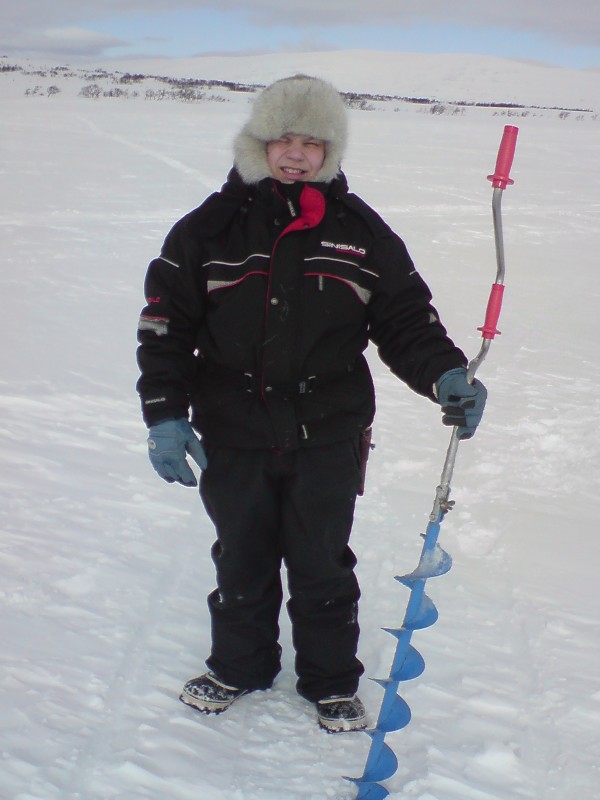 |
Juhan Niillas ice fishing (Photo: Linn Sophie Helmersen) |
– I started school in a Norwegian-speaking class. My mother and father have said that it was important that I would get as good training in Norwegian and sign language as possible. ... I was moved to a Sami-speaking class later on because my environment at home is Sami. It was important that I would not loose my Sami belonging. The Norwegian-speaking class was foreign to me. I understood Sami with signs and my friends were all in the Sami-speaking class. ...
In school there were two Sami teachers who went to seminars to learn sign language. But I had to have an interpretor, because it takes time to learn a language. I got an interpretor who had a Sami background and deaf parents. She spoke Norwegian and sign language, but understood Sami and occasionally Sami with signs. She had grown up with the deaf culture. But it was not enjoyable to have to have a grown up person with me all the time because I could not understand what the others were saying. But that is how it is to be deaf in a school for the hearing.
... – I went to primary school in Karasjok. When I was about to start lower secondary school I did not get an interpretor anymore. The interpretor moved away from the village and the teachers I had in primary school did not follow to the lower secondary school. The solution was Trondheim and the School for the deaf. In Karasjok I would not have been able to complete the lower secondary school without an interpretor. The municipality had announced a position, but there are not many people who master both Sami and sign language. No one applied for the position.
The transition from Karasjok to Trondheim was great. ... I had difficulties understanding Norwegian and had to start almost from scratch. The others in my class had come much further than me. Besides Sami was not continued as a subject in the School for the deaf. It stopped there, and I never learned to write and read Sami properly.
But it was not only pupils with physical or psychological handicaps who were sent to special schools. It could also happen to "normal" pupils who did not subordinate to the school discipline. Sverre Somby tells about this:
– Just after my seventh birthday a new everyday begun for me. I started primary school in the centre of Karasjok. To me it was a time that was completely different from the free life I had led together with my family. Sami is my mother tongue and I knew little or no Norwegian when I started school. ... The school as a whole was a Norwegian institution with a language I did not master. But it would take many years until I forgot Sami.
As most of the other children who lived outside the village, I had to live in the dormitory. I define myself as a skealbma gánda - «a rascal». I soon got into trouble when I started school. There is no saying to wether it was the school and the dormitory which were not adapted to me, or I who did not adapt to the school and the dormitory. ...
– I did not spend many years in school until I was expelled and sent home in the late autumn 1954. The school and the dormitory were not able to control me. I stayed at home for almost two months before anything happened from the school's side. Then two grown up men came to Bieskkenjárga. Their mission was to transport me and my mother to the village. They did not tell us why I was to be brought to the village. It was a terrible experience for a nine year old boy, who was handcuffed before they left home. And that was the last time I saw my home for several years.. ... I was to be transferred to a special school close to Moss. ...
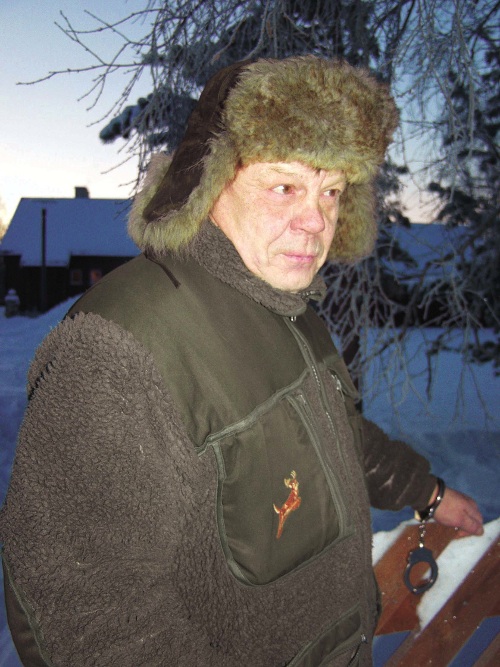 |
Sverre Somby demonstrates how he was chained to a fence in Karasjok when he was a child. (Photo: Amund Johnskareng, Min Áigi) |
– Varna school was virtually a school breeding scoundrels. Within the school and the dormitory the law of the jungle was prevailing. Violence, sadism and sexual abuse from both older pupils and employees was common. To tell anybody about what was happening was useless. It provoked punishment, and it was common to get beating from both pupils and employees. The methods of punishment that the employees made use of could be detestable, something I experienced many times. I was locked into a room in the basement several times. ....
– While I was in school I did not have much contact with my mum. There was no telephone at home, and the administration of the school did not see after that I and the other boys would able to stay in touch with our families. ...
Not until the summer 1959 did I return home for good. I had been away for three years by then. The result of my years in Varna boy's home was that I had lost my mother tongue, and was only able to speak Norwegian. It took almost half a year until I could speak proper Sami again.
Here you find all the articles in the series:
28.09.2007 Why Sami school history?
05.10.2007 Boundless ignorance
12.10.2007 Southerner-teachers encounter the Sami language
19.10.2007 The start of Sami beginner instruction
26.10.2007 The start of education in reindeer-herding
02.11.2007 From Sami to Norwegian vocational training
16.11.2007 Struggle for Sami gymnasium
28.11.2007 School experiences of Norwegian speaking Samis
14.12.2007 Resistence against Sami language and culture
25.01.2008 A strange world
23.05.2009 On Sami teachers
30.05.2009 Life in boarding school
06.06.2009 Sami pupils were bullied
13.06.2009 Sami content in the teaching
20.06.2009 Pupil as interpreter
04.07.2009 How the children quit speaking Sami
10.09.2010 God does not understand Sami
08.10.2010 The point of view of the Norwegianizers
13.10.2010 Men of the church defending the Sami language
02.12.2010 Sami teachers in old times
09.12.2010 Boarding school life in old times
18.12.2010 Sami pupils in special schools
14.01.2012 The parents' struggle for Sami education
21.01.2012 Reluctance and absence
28.01.2012 The school during the war
04.02.2012 Reconstruction and barrack schools
11.02.2012 Curriculums - for Norwegianization and for Sami school
18.02.2012 The great struggle of the curriculum
Sami school history 1
Sami school history 2
Sami school history 3
Sami school history 4
Sami school history 5
Sami school history - main page